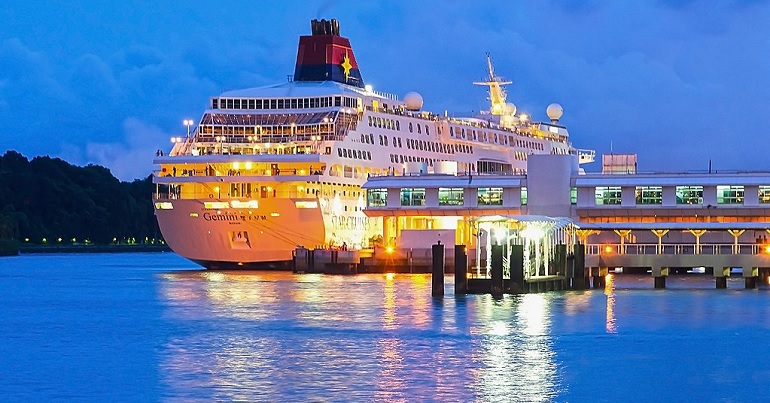Floating cities and dirty secrets: Environmental impact of luxury cruise ships

Floating cities seem like science fiction, and have been mentioned by some as one way humanity could in future cope with a rapidly growing global population and rising sea levels. But they aren’t as beyond the realms of possibility as you might think.
Luxury cruise ships, the largest of which carry thousands of passengers and are home to various ‘neighbourhoods’, gyms, cinemas, restaurants, pools and more, are essentially floating cities.
The dark secret of cruise ships
But these floating cities have a dark, dirty secret. They burn diesel, and lots of it, to power the engines and systems that sustain those on board. Diesel, which is being phased out in passenger vehicles, is one of the dirtiest fuels available, meaning cruise ships emit vast amounts of toxic chemicals which are then inhaled by people on board or those living along the coastlines cruise ships frequent.
These ships emit so much the world’s largest cruise ship operator, Carnival Corporation, was responsible for emitting 10x more sulfur oxides (SOx) than all of Europe’s 260 million plus passenger vehicles in 2017. The second largest operator, Royal Caribbean, was responsible for emitting 4x the amount of SOx produced by Europe’s passenger vehicles. This is according to a report in early June 2019 by Transport and Environment. Their Shipping Policy Manager, Faig Abbasov, said:
Luxury cruise ships are floating cities powered by some of the dirtiest fuel possible. Cities are rightly banning dirty diesel cars but they’re giving a free pass to cruise companies that spew out toxic fumes that do immeasurable harm both to those on board and on nearby shores. This is unacceptable.
Even in countries where regulations exist to control marine emissions, cruise ships are still having a significant negative impact on air quality. Denmark’s coasts are protected by a Sulfur Emission Control Area (SECA), but cruise ships in Danish waters still emitted 18 times more SOx in 2017 than all of the country’s 2.5 million passenger vehicles that year.
Barcelona is the European city worst affected by cruise ship pollution according to Transport and Environment’s report. 105 cruise ships visited the city in 2017, emitting 32,838 kg of SOx, compared to the 6,812 kg from “light duty vehicles” (passenger cars and vans).
In the UK, Southampton was the worst affected city (and 5th worst affected in Europe), with 42 cruise ships emitting 19,734 kg of SOx, compared to 3189 kg from the city’s “LDVs”. Clean Air Southampton commented:
Shipping, and the cruise industry in particular, is one of many significant sources of air pollution in the city. Although hosting the ships brings a lot of money through the city it also imposes significant health costs on the city and those who live here. It is questionable if those who pay these externalised costs really see many of the benefits.
Industry inaction
Cruise ships also emit vast amounts of NOx (nitrogen oxides). Transport and Environment’s study found that cruise ships in Europe emit the equivalent of 15% of the NOx that the entire European passenger car fleet emits each year.
An undercover report into air quality on Carnival Corporation’s ships, released in early 2019, found that air pollution levels on board four of the company’s ships were comparable to those in some of the world’s most polluted cities, like Beijing and Santiago.
So while many of the world’s most polluted cities are trying to clean up their air by banning diesel cars and introducing low emission zones, cruise ships emitting dangerous amounts of harmful polluting chemicals are sailing between the world’s port cities polluting their air and detracting from the work being done to clean it up on land. Faig Abbasov continued:
There are enough mature technologies to clean up cruise ships. Shore-side electricity can help cut in-port emissions, batteries are a solution for shorter distances and hydrogen technology can power even the biggest cruise ships. The cruise sector are apparently not willing to make the shift voluntarily, so we need governments to step in and mandate zero emission standards.
Transport and Environment’s report calls for a zero emission berth standard for all European ports, and stringent air pollution standards which would apply to cruise ships. The report also calls for a tightening of the SECA standard in Europe to 10ppm, equivalent to that used in road transport.
These recommendations would be an excellent starting point to cleaning up an industry which is unwilling to change, and would happily continue to burn vast amounts of dirty diesel and pollute our air.




Leave a Reply